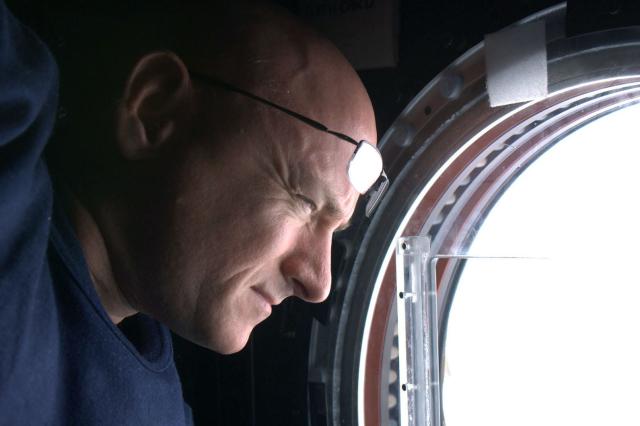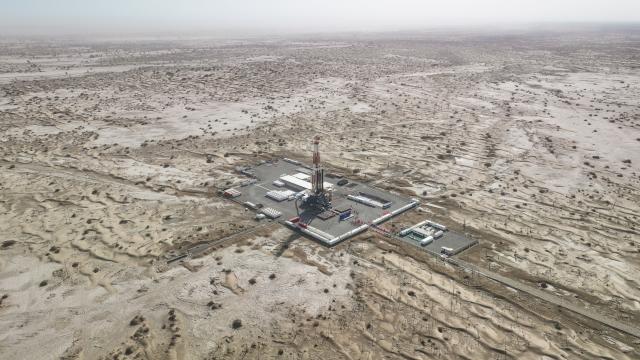Science Daily News | 04 Jun 2023

Views (124)

'Influx' of hedgehogs injured by garden strimmers in Jersey
The Jersey Hedgehog Preservation Group is advising people to "check before you chop".

A conservation group has said it is concerned by the number of injured hedgehogs being admitted due to grass strimmer injuries.
Jersey Hedgehog Preservation Group said strimmer injuries could be avoided with "a little forethought" and urged people to "check before you chop".
The group said most of the injured animals had to be put to sleep due to the severity of their injuries.
It has now issued advice on how to avoid injuring animals when strimming.
The group is urging people to remember that overgrown grassy areas and hedgerows provide homes to animals and insects.
It said the housing shortage in Jersey "extends to nature", with the building of more homes meaning a further loss of habitat for wildlife.
Gill Morgan, from the group, said: "We've become increasingly concerned by the influx of injured and maimed hedgehogs.
"We've recently had six come in with strimmer injuries, and only one has survived."
Ms Morgan added: "Please check in the long grass, under hedges, for sleeping hedgehogs and other wildlife before you start."
Jersey Hedgehog Preservation Group said people can use a boot, a gloved hand, a rake or a stick to gently move any creatures out of harms way.
Unlike some other mammals, hedgehogs do not run away when disturbed, but instead curl up in a ball - which the group said was "no defence" against a strimmer.
The group said that at this time of year, hedgehog mothers were nursing their hoglets and if the mother was killed or injured, or the nest was disturbed, the babies were unlikely to survive.
Why reading can make you carsick, according to an expert
For some people, reading in the car is a great way to pass the time. For others, it's a one-way ticket to motion sickness.

For some people, reading in the car is a great way to pass the time.
For others, it's a one-way ticket to motion sickness.
It happens when your eyes focus on a stationary object but your inner ear experiences movement.
The sickness is caused by a disconnect between the systems responsible for someone's balance and spatial orientation or, as Susmita explained, "a conflict between the information received by their eyes and the sensations felt by their inner ears."
Your brain thinks you're moving in the car because it is perceiving motion through your inner ear, while your eyes are focusing on a stationary object, Susmita said.
"This creates a sensory mismatch, as your eyes are sending signals that you are not moving, in contradiction to your inner ears, which detect motion and changes in direction," she said. "This sensory conflict, leading to a disruption in the body's normal sense of balance, can result in symptoms such as nausea, dizziness, sweating, and sometimes, vomiting."
Reading, specifically, "requires focused attention and fine visual tracking" which makes the sensory mismatch even worse, she said. Your peripheral vision also plays a part, as it is not perceiving motion either, even though your inner ear is feeling the motion of the car.
It's important to note, however, that not everyone experiences this sensation, and sensitivities to these issues vary from person to person.
But there's bad news for book lovers who do get carsick: Susmita recommends that anyone who feels motion sickness should limit or altogether avoid reading while in the car.
How to build a cheap DIY underground bunker to protect you from nuclear fallout, in 6 steps
This cheap DIY underground bunker could help you survive nuclear fallout if an attack is imminent. Living through an apocalypse can be affordable.

Fallout shelters can cost millions of dollars. But this DIY underground bunker costs about $1,000.
You wouldn't want to live in this makeshift underground bunker forever.
In a pinch, this DIY fallout shelter would be better than an above-ground building, an expert said.
You would just need a couple of days' time, some equipment, and ideally a bunker-building buddy.
Photo taken in 1961 of a 77-year-old man who built his own fallout shelter in his backyard. Your DIY shelter probably doesn't need to be this big.Michael Ochs Archives / Stringer / Getty Images
This shelter, in particular, uses soil to absorb harmful radiation from fallout.
The book says you'll need the following to build this basic fallout shelter:
About 20 to 30 cut logs or wooden poles, at least seven feet in length and four to six inches in diameter
Some waterproof material, like plastic sheeting, canvas, or tarps
A shovel or backhoe for all that digging you'll be doing
Working by hand, two people could build this shelter in a backyard or wooded area in two days or less, "Nuclear War Survival Skills" says.
First, scout out a location for your fallout shelter. Ideally, it should be on flat ground and at least 50 feet from other buildings or trees in case of fire, "Nuclear War Survival Skills" says.
Step 2: Next, dig a five-foot-long entrance with steps or a slope down into the main area. At the other end of the trench, dig a five-foot-long ventilation trench to help circulate air. Dig this trench just under the ground's surface with an opening to the surface at the end of it. It should be about two feet wide by three and a half feet deep — it's basically a crawl space and can double as an emergency exit for smaller individuals.
Step 5: After that, fill any open space between the logs with cloth, leaves, or other material on hand to prevent dirt from falling through the cracks between them.
"In most cases, 36 inches of soil is enough — it may reduce the gamma radiation dose by more than 95%," Sun said.
The length of time you should spend in the fallout shelter "depends on many factors, like the bomb size, denotation location, and weather conditions," Sun said.
"Generally, nuclear fallout will take hours and days to settle," Sun continued. "The most dangerous period is typically within one to three days after the explosion when radiation levels are very high. After that, radiation levels go down exponentially."
You'd want to "try to get away as far as possible, wash your skin to avoid any dust, and use masks for airborne particles," Sun said.
Then you'd want to find shelter in a place with the thickest material possible between yourself and the outside world: "Basements and concrete buildings are good choices. If an underground option is unavailable, you may try to stay underneath the interior stairs," Sun said.
But, Sun said, the homemade fallout shelter offers better protection than a basement or concrete building because the soil-covered fallout shelter has the advantage of heavy shielding on top and "the strongest radiation may come from above in a nuclear explosion, especially the initial explosion that might blow away the building structure above you."
Retired NASA astronaut Scott Kelly describes his UFO experience. 'It turns out it was Bart Simpson, a balloon.'
Scott Kelly describes all of the times he saw unusual behavior while in space and says every time it was the result of atmospheric lensing.

Retired NASA astronaut Scott Kelly spent over 8,100 consecutive hours in space.
He said on Wednesday at a NASA meeting that he saw a lot of odd behavior while he was up there.
But his UFO experience actually happened on Earth while he was flying off Virginia Beach.
Recalling the thousands of hours he spent in space, Kelly said on Wednesday, "Oftentimes, in space, I would see things and I was like, 'That's really not behaving like it should.' And every single time when I would look at it long enough, I would realize that it was atmospheric lensing."
Optical illusions like this are the result of how the particles in Earth's atmosphere bend and manipulate light, which can make us see distorted versions of reality.
"It was the fact that what I was looking at was actually flying behind the atmosphere and because of the variations in the atmosphere it made the trajectory look like it wasn't going in a straight line," Kelly said.
NASA's meeting on Wednesday was more a call to action for better data collection than it was a revelation for folks looking for answers to UFO conspiracy theories. So are UFOs real, or are they just a trick of the eye?
"We have a community of people who are completely convinced of the existence of UFOs, and we have a community of people who think addressing this question is ridiculous," said David Spergel, the panel's chair. "And I think as scientists, the way to approach questions is you start by saying, 'We don't know,' and then you collect data and you try to calibrate your data well."
Watch Kelly talk more about optical illusions in space in the video below:
China is drilling a hole over 33,000-feet-deep to explore the Earth's crust
Chinese engineers said the deep-Earth exploration would drill through an "underground Mount Everest."

China has begun drilling a hole over 10,000 meters (32,808 feet) deep into the Earth's crust.
The project will provide data on the Earth's internal structure.
Chinese President Xi Jinping named deep Earth sciences one of four strategic frontiers to explore.
Scientists in China have begun drilling a hole over 10,000 meters (32,808 feet) deep into the Earth's crust, a report says.
The drilling project, led by the country's largest oil producer China National Petroleum Corp., would be among the deepest ever drilled.
The drilling process will penetrate more than 10 layers of the Earth's crust and reach the Cretaceous system, consisting of rock dating back up to 145 million years.
"The construction difficulty of the drilling project can be compared to a big truck driving on two thin steel cables," Sun Jinsheng, a Chinese Academy of Engineering scientist, told Xinhua news agency.
Wang Chunsheng, a technical expert part of the operation, said that drilling the borehole is an attempt to explore the unknown territory of the Earth and expand the boundaries of human knowledge, according to Xinhua.
Everest in the Himalayas is the world's highest peak at 29,031 feet.
In a 2021 speech addressing the nation's top scientists, Chinese President Xi Jinping named deep Earth sciences one of four strategic frontiers to explore.
The project could help identify mineral and energy resources and assess the risks of environmental disasters like earthquakes and volcano eruptions, Bloomberg noted.
This hole will not be the deepest human-made despite its impressive depth. The deepest hole is still the Kola Superdeep Borehole in Russia, which reached 12,262 meters (40,230 feet) in 1989 after 20 years of drilling.
Around 400 patients were wrongly informed they might have cancer, biotech company says
The company, Grail, blamed a software issue, which was now resolved, for the incorrect letters sent to people waiting to find out if they had cancer.

A biotech company said 400 people had been mistakenly informed they might have cancer.
Grail Inc said the error resulted from a software issue, which has been resolved.
The incident was part of a trial of an early-detection blood test called Galleri.
A cancer test company incorrectly informed around 400 patients that they may have developed cancer, a company said, after there was a software issue with its telemedicine provider.
Grail said telehealth company PWNHealth accidentally sent the letters due to a software issue — that has now been resolved — and that it "was in no way related to or caused by an incorrect Galleri test result," per Reuters.
The company, owned by gene sequencing company Illumina, said it promptly contacted patients after the incident. The patients' health information had not been breached or disclosed, it said on Friday.
The mistake has prompted some concern from life insurers who are trialing the detection test, according to the Financial Times.
The test, which only requires a single drop of blood, has been called "revolutionary" and "cutting edge" by British and US health officials, per the FT. Other experts have warned about widely instituting the tests before trials prove they are effective in saving lives.
American life insurer Principal subsequently said it would review its relationship with Grail, the FT reported. Insurer MassMutual also said it would pause its pilot trial of the test.
0 Likes
